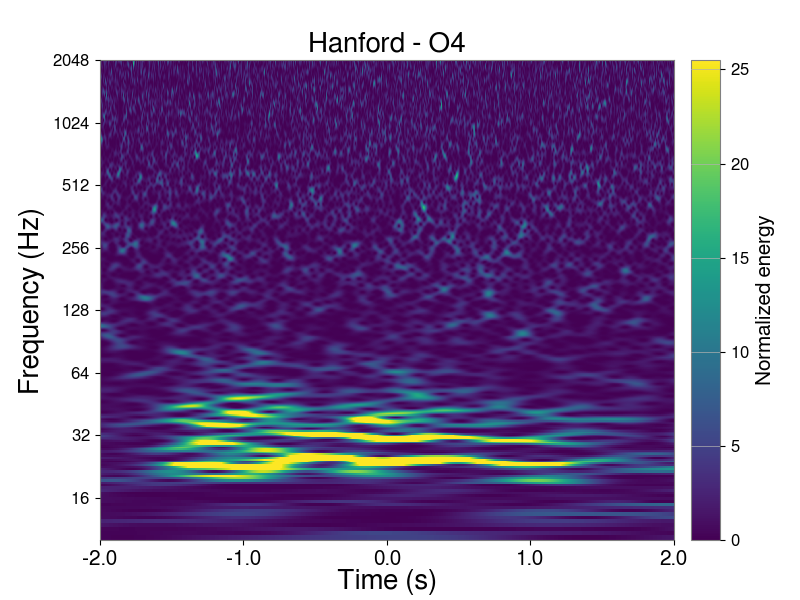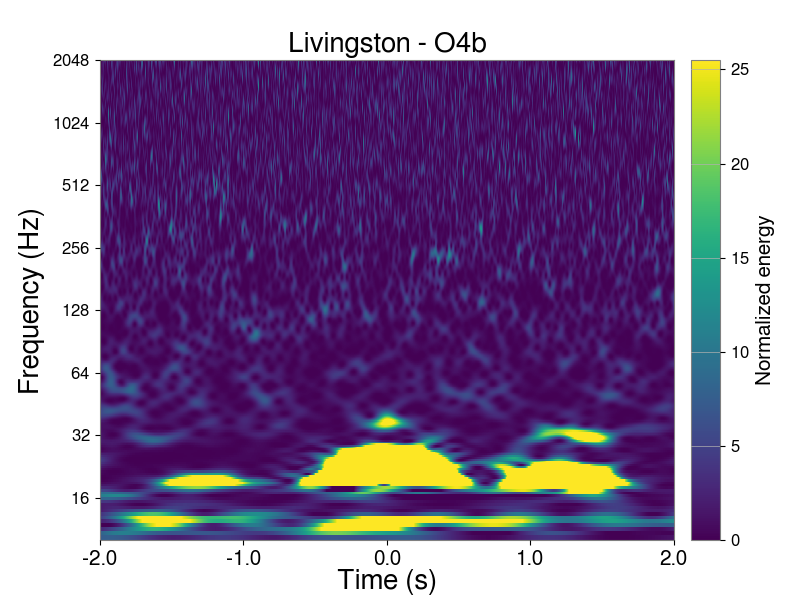¶ Scattered Light
Description:
Scattered light glitches usually look like upward-facing humps, like the back of a camel, or a curvy sea serpent sticking out of the water. Typically the frequency of scattered light is below 30 Hz and the time period for the humps to repeat can be between 0.1 second and several seconds. The humps can look thin or fat.
When light from the main LIGO light beam hits one of the LIGO optical components (mirrors, beamsplitters, photodiodes), a small portion of that light is not reflected, transmitted, or absorbed — it instead it is scattered (i.e., reflected at a random angle). Some of the light that is scattered may then reflect off of other objects (such as vacuum chamber walls) that are not seismically isolated and re-enter the LIGO beam with a different phase. This phenomenon is described in more detail
here.
This scattered light is the cause of so called 'fringes' in the interferometer's output signal with frequency f_fringe(t)=|2*v_sc(t)/lambda| where v_sc is the velocity of the other object and lambda is the wavelength of the light (1064 nm for LIGO). Because the frequency of the scattering is proportional to the absolute value of the velocity with which something is moving, and further, because most of the things (optics, vacuum chamber walls, etc) are moving in an oscillatory fashion (such as a pendulum or a spring, so their |velocity| goes through zero and up to some value, but then back to zero and repeats), the scattering often looks like humps in frequency.
Scattered light is present at both LHO and LLO and it is a harmful source of noise for searches for compact binary coalescences.A major source for large multi-arch Scattered Light glitches at LIGO was identified in late 2019 and mitigated in January 2020. See S. Soni et al.,
Reducing scattered light in LIGO's third observing run for the full story. Gravity Spy data were subsequently used to validate that the fix was effective!
Cause:
Light scattered off of LIGO’s optical components and re-entering the beam with a different phase.
Status:
Active.
Examples:



.png)
.png)
.png)
Audio Example:
Make sure to wear good headphones!

More Information:
- For more information on Scattered Light glitches, see this paper
- LIGO Livingston electronic logbook entry from 14 October 2015
- LIGO Livingston electronic logbook entry from 18 October 2015
- LIGO Hanford electronic logbook entry from 11 October 2015
- LIGO Hanford electronic logbook entry from 5 January 2020